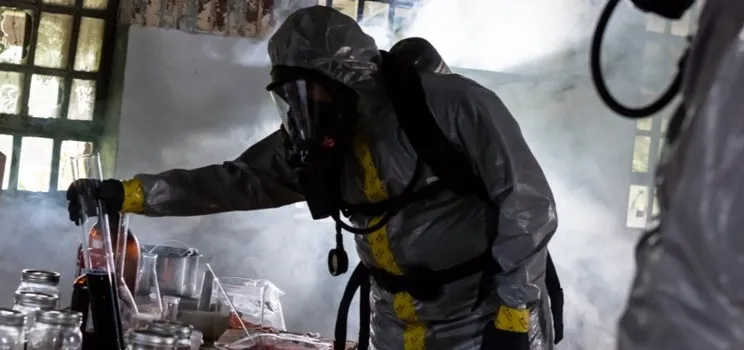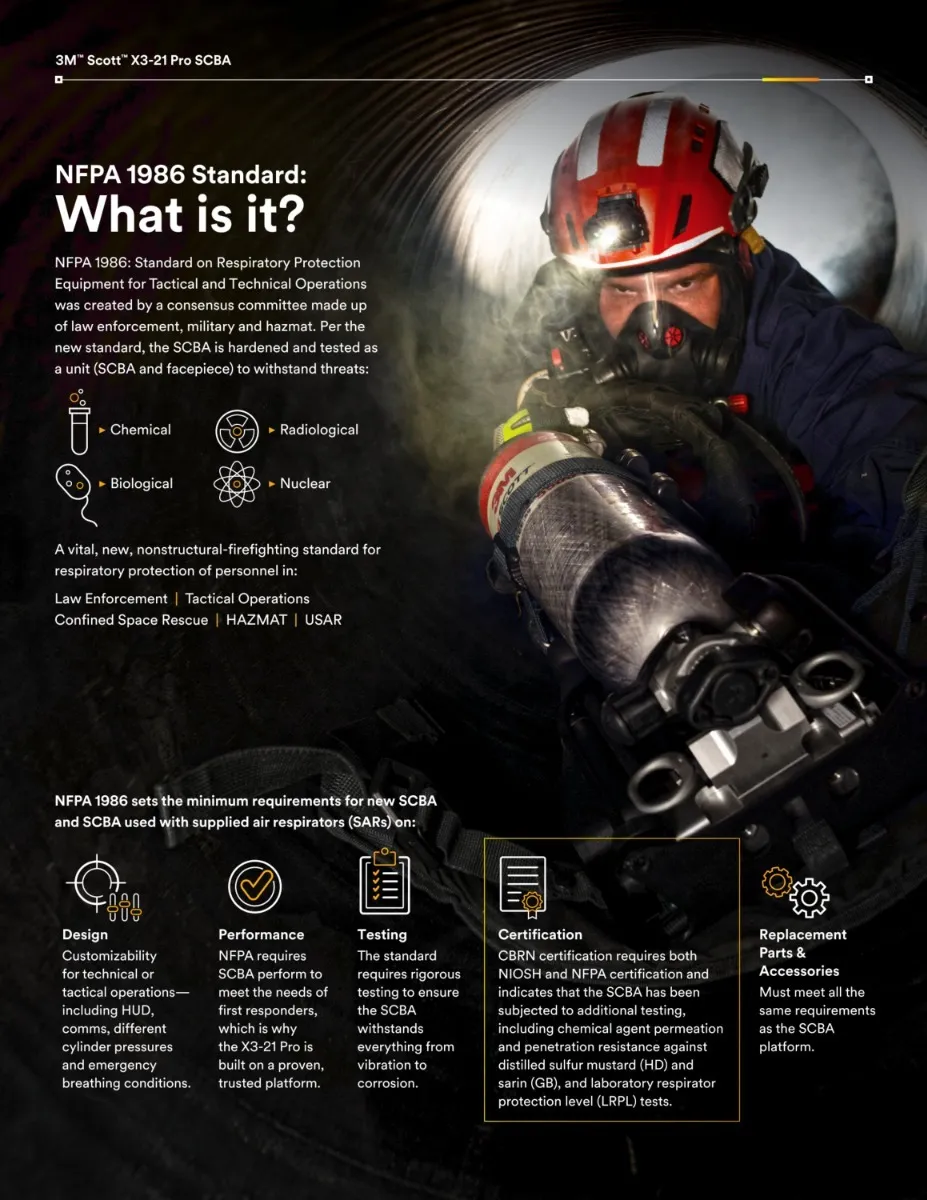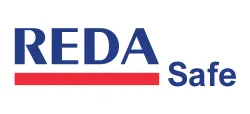Why Choose NFPA 1986 Compliant Respiratory Protection Equipment for Law Enforcement?

Law enforcement personnel face many types of dangerous and hazardous conditions where using a self-contained breathing apparatus (SCBA) may be necessary. Often, they are equipped with industrial SCBAs or firefighting SCBAs, but is this the right equipment for their job? Not necessarily.
In fact, the National Institute of Occupational Safety and Health (NIOSH) recognized this difference and work with the National Fire Protection Association (NFPA), the leading standard developer in this area for the U.S., to develop the NFPA 1986 Standard on Respiratory Protection Equipment for Tactical and Technical Operation. Why is this important? Let’s take a look.
Background of NFPA 1986
This relatively recent standard was first issued in 2017. A new, cross-functional Technical Committee comprised of representatives from the law enforcement community, U.S. Department of Defense, National Institute of Standards & Technology (NIST), NFPA, NIOSH, Underwriter’s Laboratory (UL) and Safety Equipment Institute (SEI), et. al. developed the NFPA 1986 product standard that details minimum SCBA requirement guidelines for:
- NIOSH certification of Chemical, Biological, Radiological and Nuclear (CBRN) compliance in accordance with the Statement of Standard for NIOSH CBRN SCBA Testing
- Design requirements, including optional ‘heads up display’ (HUD) design requirements and optional Rapid Intervention Crew/Company Universal Air Connection (RIC UAC) design requirements
- Performance requirements; airflow, environmental temperature, vibration resistance, corrosion resistance, etc.
- Certification and recertification, manufacturers’ quality assurance, safety alerts, and recall systems
- Labeling and information
- Test methods
Although all modern SCBAs are made up of the same five basic components (backframe and harness, primary pressure reducer, secondary pressure regulator, cylinder and facepiece), they can differ greatly depending on what specific work environment the model is destined to be used in. The NFPA 1986 SCBA standard was specifically designed for end-users such as emergency services personnel engaged in tactical operations, disaster response, confined space rescue, crime scene investigation, clandestine drug lab clean-up, and other response and or recovery situations that may expose them to CBRN hazards and/or could be immediately dangerous to life or health (IDLH).
This new standard has been deemed important enough that NIOSH revised the prerequisites of their CBRN SCBA testing program to accept compliance with NFPA 1986.[i] CBRN certification for an SCBA requires all components, as an entire system, achieve both NIOSH and NFPA certification and indicates that the SCBA had been subjected to additional testing, including chemical agent permeation and penetration resistance against distilled sulfur mustard (HD) and sarin (GB), and laboratory respirator protection level (LRPL) tests.

Choosing an SCBA that is NFPA 1986 Compliant
Prior to NFPA 1986, the only way to get an SCBA with a CBRN rating was to purchase an SCBA designed for interior structural firefighting; however, that meant accepting additional features and expenses that were not conducive to tactical operations. NFPA 1986 maintains many of the durability and performance requirements of firefighting SCBA; however, it makes many of the features optional so an agency can customize the SCBA for their anticipated operations. Specifically, NFPA 1986 allows for all electronics to be optional, makes considerations for covert operations, and does not have high heat resistance requirements needed for structural firefighting commonly encountered by firefighters.
As NIOSH has noted: “The more modest fire hardening required in NFPA 1986 has been incorporated to assure protection against the kind of brief, but possibly intense, flame and heat hazards that could occur in a chaotic, uncontrolled environment of a terrorist incident… In spite of the fact that the protection from thermal hazards is different…NFPA 1986 approved SCBA will provide the same high levels of respiratory protection from all threats, including the same level of protection against CBRN respiratory threats.”[ii] As with the air-purifying respirators noted above, NIOSH is the primary regulatory and certification agency for SCBA. SCBA must be submitted for evaluation against the terms of Title 42 Code of Federal Regulations, Part 84. This includes certification of new compressed breathing air open-circuit SCBA and supplied air respirators (SCBA/SARs).
Resources:
